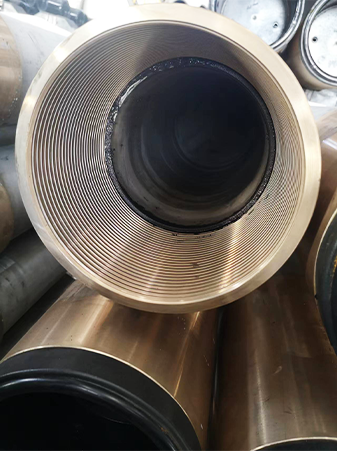- Afrikaans
- Albanian
- Amharic
- Arabic
- Armenian
- Azerbaijani
- Basque
- Belarusian
- Bengali
- Bosnian
- Bulgarian
- Catalan
- Cebuano
- Corsican
- Croatian
- Czech
- Danish
- Dutch
- English
- Esperanto
- Estonian
- Finnish
- French
- Frisian
- Galician
- Georgian
- German
- Greek
- Gujarati
- Haitian Creole
- hausa
- hawaiian
- Hebrew
- Hindi
- Miao
- Hungarian
- Icelandic
- igbo
- Indonesian
- irish
- Italian
- Japanese
- Javanese
- Kannada
- kazakh
- Khmer
- Rwandese
- Korean
- Kurdish
- Kyrgyz
- Lao
- Latin
- Latvian
- Lithuanian
- Luxembourgish
- Macedonian
- Malgashi
- Malay
- Malayalam
- Maltese
- Maori
- Marathi
- Mongolian
- Myanmar
- Nepali
- Norwegian
- Norwegian
- Occitan
- Pashto
- Persian
- Polish
- Portuguese
- Punjabi
- Romanian
- Russian
- Samoan
- Scottish Gaelic
- Serbian
- Sesotho
- Shona
- Sindhi
- Sinhala
- Slovak
- Slovenian
- Somali
- Spanish
- Sundanese
- Swahili
- Swedish
- Tagalog
- Tajik
- Tamil
- Tatar
- Telugu
- Thai
- Turkish
- Turkmen
- Ukrainian
- Urdu
- Uighur
- Uzbek
- Vietnamese
- Welsh
- Bantu
- Yiddish
- Yoruba
- Zulu
Optimizing Seating for Nipple Tubing in Fluid Transfer Systems
Understanding Seating Nipple Tubing An Essential Component in Oil and Gas Production
In the oil and gas industry, efficient extraction and production processes are paramount. One of the critical components that contribute to the success of these processes is the seating nipple tubing, commonly referred to in the industry as “nipple tubing.” This specialized tubing plays a significant role in well completion and two-way fluid operations, making it a vital element in the overall performance of production systems.
What is Seating Nipple Tubing?
Seating nipple tubing is a type of pipe installed within a wellbore to facilitate the deployment and retrieval of downhole equipment. This could include devices such as plugs, valves, and other tools that are essential for managing fluid flow. The seating nipple itself is designed with specific features that allow it to securely hold these downhole tools in place while allowing for easy access when interventions are necessary.
The tubing is typically made of durable materials, such as high-strength steel, which can withstand the extreme pressures and corrosive environments often found in oil and gas wells. It can be customized to fit the specific requirements of different wells, depending on factors like depth, production rates, and the nature of the fluids being extracted.
Functions and Applications
The primary functions of seating nipple tubing include
1. Well Control By securely holding downhole tools in place, the seating nipple enables operators to control the flow of fluids in and out of the well. This is crucial for maintaining pressure and preventing blowouts.
seating nipple tubing

2. Fluid Management The seating nipple allows for the easy installation of various downhole products that can assist in managing the fluid dynamics within the well. For example, it can facilitate the placement of packers that isolate sections of the well for improved production efficiency.
3. Intervention Flexibility The design of seating nipples enables operators to quickly retrieve or replace downhole equipment during workovers or other interventions without needing to pull the entire tubing string.
4. Resilience Given the harsh conditions in which they operate, seating nipple tubing systems are designed for durability and resilience. They must handle not only high pressure but also temperature variations and exposure to various fluid types, including corrosive elements.
Installation and Maintenance
Proper installation of seating nipple tubing is crucial for its effective functioning. Typically, these systems are insulated within the completion string of the well. Skilled personnel follow stringent guidelines and regulations to ensure that the seating is performed accurately and securely.
Regular inspections and maintenance of the tubing are also vital to ensure its longevity and functionality. Operators often utilize advanced technologies, such as fiber-optic sensing systems, to monitor the integrity of the tubing and detect any potential issues before they escalate into significant problems.
Conclusion
In summary, seating nipple tubing is a critical component of modern oil and gas production systems. Its design and functionality facilitate efficient well control, fluid management, and intervention, contributing significantly to the success of extraction operations. As the industry continues to evolve with new technologies and methods, the importance of durable and efficient components like seating nipple tubing will remain at the forefront of successful oil and gas production practices. Understanding its role can help operators maximize production efficiency while ensuring safety and environmental compliance in their operations.
-
Tubing Pup Joints: Essential Components for Oil and Gas OperationsNewsJul.10,2025
-
Pup Joints: Essential Components for Reliable Drilling OperationsNewsJul.10,2025
-
Pipe Couplings: Connecting Your World EfficientlyNewsJul.10,2025
-
Mastering Oilfield Operations with Quality Tubing and CasingNewsJul.10,2025
-
High-Quality Casing Couplings for Every NeedNewsJul.10,2025
-
Boost Your Drilling Efficiency with Premium Crossover Tools & Seating NipplesNewsJul.10,2025







